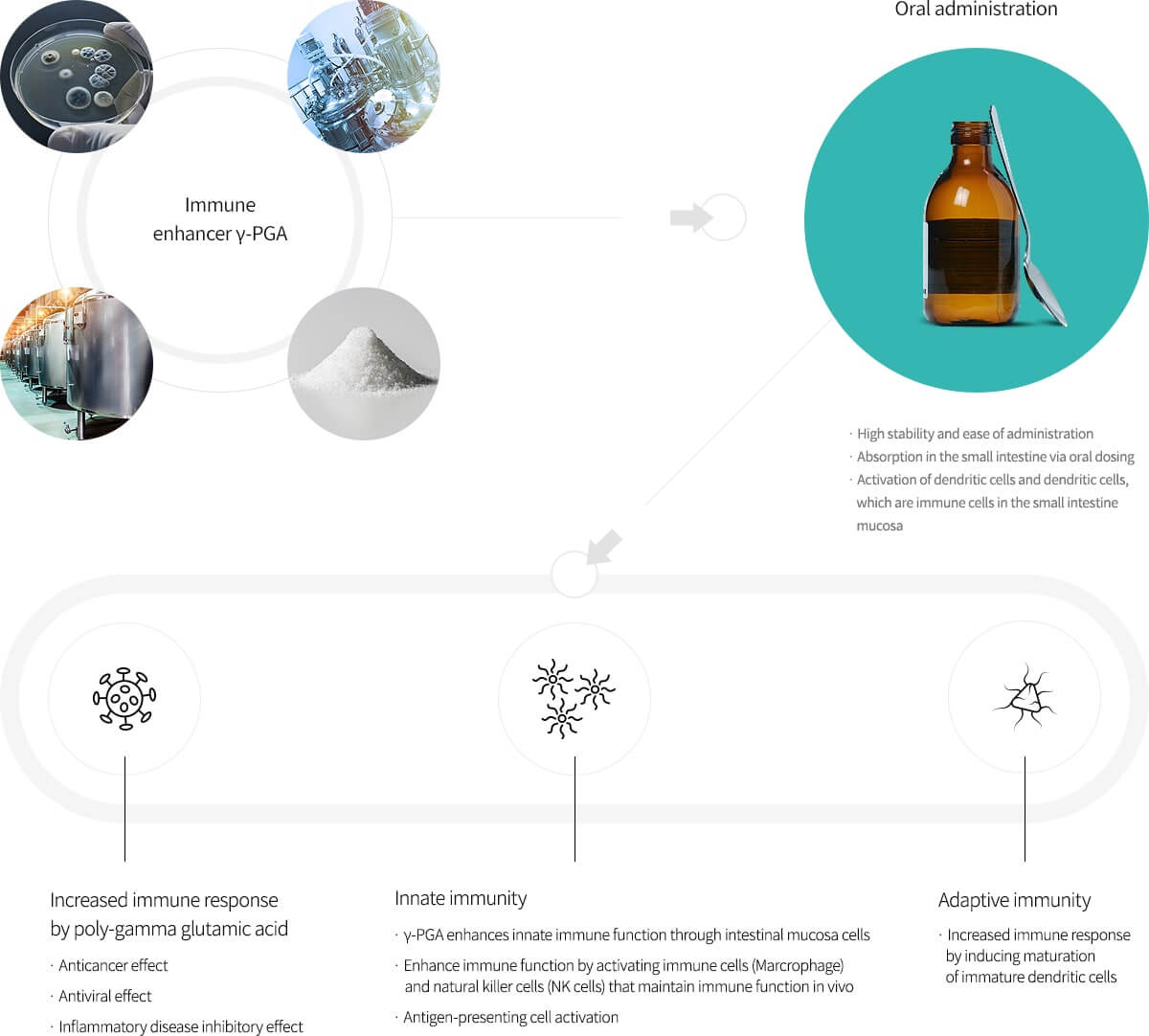HumaMAX®
Inside-the-body immunoregulatory platform technology using the characteristics of γ-PGA,
a new immunity-controlling material for medicine
Core Technology HumaMAX® Tech.
Immunoregulatory substance γ-PGA
Innate Immunity Induces innate immunity
Adaptive Immunity Strengthens adaptive immunity
- · Activates natural killer (NK) cells
- · Induces secretion of Cytokines and Chemokines
- · Activates antigen-presenting cells
CD8T Cell CD4 Cell
· Induces antigen-specific adaptive immunities
Core source technology utilizing γ-PGA, which enhances the activation of natural killer cells by using a high-molecular substance created by a microorganism called "Bacillus subtilis" to stimulate immunocytes in the intestinal mucosal membrane.
New medicine development platform technology based on the immunoregulatory effects of a natural amino acid high-molecular refined substance, "γ-PGA (Poly-γ-glutamic Acid)"
- A structure in which glutamic acid, a necessary type of amino acid, is repetitively connected through gamma-peptide bonds
- Its mechanism is an immunoregulatory effect : TLR4 as a medium ① Induces innate immunity ② Strengthens adaptive immunity ③ Improves the tumor microenvironment (TEM) in a favorable manner
"Bacillus subtilis Chungkookjang," a GRAS (Generally recognized as safe) microorganism
- Produced with a patented strain
Medicine under development and diseases to be treated
LSIL medicine (BLS-H01): Clinical Phase 3 in progress
- Extended application for more diseases : A combined treatment of tumor with Immune Checkpoint Blockade (ICB), cell therapy products, etc.
Poly-γ-glutamic acid (γ-PGA)
- An edible amino acid, high-molecular material, and a natural substance found in bean-fermented foods such as Korea's very own
"cheonggukjang" - Produced by Bacillus subtilis Chungkookjang, a type of GRAS (generally recognized as safe) microorganism with edible safety established
(MOAlifeplus's patented strain) - Though it is a natural substance, a mass production system for γ-PGA of high molecular weight (2,000 kDa on average) has been established
through a fermentation and refinement processes (certified as one of Korea's Top 10 New Technologies) - Increase in immunoreaction via γ-PGA, effective against cancer, viruses, and inflammation diseases
- γ-PGA also has several health-related functions including moisturization, acceleration of mineral absorption, and inhibited activation of
the lyase of hyaluronic acid, which is a tissue component inside the body
